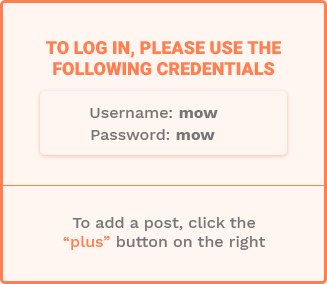Now Reading: How to Use Context Clues to Understand Unfamiliar Words
-
01
How to Use Context Clues to Understand Unfamiliar Words
How to Use Context Clues to Understand Unfamiliar Words

How to Use Context Clues to Understand Unfamiliar Words
When reading, encountering unfamiliar words can be a significant obstacle to understanding the material. However, by utilizing context clues, readers can improve their reading comprehension and vocabulary acquisition.

Context clues are the words or phrases surrounding an unfamiliar word that provide hints about its meaning. Effective use of context clues enables readers to infer the meaning of unknown words, thereby enhancing their reading skills and overall comprehension.
By applying context clues, readers can decipher unfamiliar vocabulary, fostering a deeper understanding of the text and improving their ability to grasp complex concepts.
Key Takeaways
Key Takeaways
- Context clues aid in vocabulary acquisition
- Improved reading comprehension through context clues
- Effective use of context clues enhances reading skills
- Understanding unfamiliar words with context clues
- Vocabulary acquisition through reading
What Are Context Clues?
Context clues are hints or cues within a text that help readers understand unfamiliar or difficult words. These clues enable readers to infer the meaning of unknown words, enhancing their comprehension and vocabulary acquisition.
Definition and Importance
Context clues play a vital role in reading comprehension by providing readers with the necessary information to decipher unfamiliar words. The presence of context clues facilitates vocabulary acquisition, allowing readers to develop their reading fluency and enhance their literacy skills.
The Role of Context in Reading Comprehension
Context is essential in reading comprehension as it provides readers with the necessary tools to understand complex texts. By utilizing context clues, readers can infer the meaning of unknown words, thereby improving their overall comprehension.
Benefits of Using Context Over Dictionary Dependence
Relying on context clues rather than dictionaries promotes a more active and engaging reading experience. By using context to understand unfamiliar words, readers develop a deeper understanding of the text and improve their vocabulary acquisition skills.
Types of Context Clues
There are several types of context clues that readers can utilize to understand unfamiliar words.
Overview of the Five Major Categories
The five major categories of context clues are: definition or explanation clues, synonym or restatement clues, antonym or contrast clues, example or illustration clues, and inference or general context clues.
When Each Type Is Most Useful
Each type of context clue has its own strengths and is suited to specific situations. For instance, definition clues are particularly useful when the text provides a direct explanation of an unfamiliar word. Synonym clues are helpful when the text restates or rephrases a difficult word, making its meaning clearer. Antonym clues are effective when the text contrasts an unfamiliar word with its opposite, highlighting its meaning. Example clues are beneficial when the text provides illustrative examples that demonstrate the meaning of an unfamiliar word. Inference clues are valuable when the text requires readers to make inferences based on the context, promoting a deeper understanding of the material.
The Science Behind Vocabulary Acquisition
Understanding how our brain processes new words is crucial for effective vocabulary acquisition. Research has shown that reading plays a significant role in vocabulary growth, and various cognitive processes are involved in learning new words.
How Our Brain Processes New Words
When we encounter unfamiliar words while reading, our brain uses various cognitive pathways to process and retain the new information. The process involves multiple factors that influence memory retention, including the frequency of exposure, contextual clues, and prior knowledge.
Cognitive Pathways for Word Learning
The cognitive pathways involved in word learning are complex and multi-faceted. Research suggests that the brain processes new words through a combination of explicit and implicit learning mechanisms. Explicit learning involves direct instruction and conscious attention to word meanings, while implicit learning occurs through exposure to words in context.
Memory Retention Factors
Several factors influence memory retention, including the spacing effect, the testing effect, and the generation effect. The spacing effect refers to the phenomenon where information learned in multiple sessions is retained better than information learned in a single session. The testing effect suggests that retrieving information from memory strengthens retention, while the generation effect implies that actively generating information during learning enhances retention.
The Connection Between Reading and Vocabulary Growth
Reading is a crucial factor in vocabulary acquisition, and research has consistently shown that regular reading is associated with significant vocabulary growth. The compounding effect of regular reading on vocabulary acquisition is well-documented, and studies have demonstrated that reading extensively can lead to substantial improvements in vocabulary knowledge.
Research on Incidental Vocabulary Acquisition
Incidental vocabulary acquisition refers to the process of learning new words through exposure to text, rather than through explicit instruction. Research has shown that incidental vocabulary acquisition is a significant contributor to vocabulary growth, and that it can be facilitated through extensive reading.
The Compounding Effect of Regular Reading
Regular reading has a compounding effect on vocabulary acquisition, meaning that the benefits of reading on vocabulary growth accumulate over time. Studies have shown that reading regularly can lead to significant improvements in vocabulary knowledge, and that the benefits of reading on vocabulary acquisition are long-lasting.
Identifying Definition Clues in Text
## Identifying Definition Clues in Text
Understanding unfamiliar vocabulary is a crucial aspect of reading comprehension. One effective way to improve your reading skills is by identifying definition clues in the text.
### Direct Definitions
Direct definitions are explicit explanations of unfamiliar words or phrases provided within the text. These definitions can be presented in various forms, including “is” statements and direct explanations.
#### Identifying “Is” Statements and Direct Explanations
When a text directly states the meaning of an unfamiliar word or phrase, it is considered a direct definition. For example, if a sentence says, “The capital of France is Paris,” it directly defines the term “capital of France.” Similarly, phrases like “per se” or “i.e.” are used to provide direct explanations.
#### Recognizing Definition Patterns
Certain patterns or structures within the text can indicate the presence of definition clues. For instance, phrases like “that is,” “in other words,” or “to wit” often signal that a definition is being provided.
### Appositives and Parenthetical Explanations
Appositives and parenthetical explanations are phrases or clauses that provide additional information about a word or phrase. These explanations can be set off by commas, parentheses, or dashes.
#### Comma-Set Definitions
Comma-set definitions are phrases or clauses that are set off by commas, providing additional information about a word or phrase. For example, in the sentence “My sister, a doctor, is very kind,” the phrase “a doctor” is an appositive, providing more information about “My sister.”
#### Parentheses and Dashes as Definition Indicators
Parentheses and dashes can be used to enclose explanatory information, indicating that it is a parenthetical remark or an aside. For instance, in the sentence “The capital of France (Paris) is a beautiful city,” the word “Paris” is an appositive, and the phrase “(Paris)” is a parenthetical explanation.
### Examples as Definition Clues
Examples can serve as definition clues, providing context for understanding unfamiliar words or phrases.
#### Extracting Meaning from “Such As” and “For Instance” Phrases
Phrases like “such as” and “for instance” often introduce examples that illustrate the meaning of a word or phrase. For example, in the sentence “I enjoy reading books, such as novels and poetry,” the phrase “such as” introduces examples of the types of books being referred to.
#### Practice Exercises with Definition Clues
To reinforce your understanding of definition clues, practice exercises can be helpful. Try to identify the definition clues in a given text, and analyze how they contribute to the overall meaning.
By following these guidelines and incorporating the suggested keywords, you can create a well-structured and informative section on identifying definition clues in text.
Using Synonym and Antonym Clues
When encountering unfamiliar words, readers can utilize various types of context clues to infer their meanings. This section will explore the use of synonym and antonym clues, as well as signal words that indicate relationships, to facilitate understanding.
Recognizing Restatement Patterns
Restatement patterns, or synonym clues, occur when an author rephrases or restates a word or phrase to provide clarity or additional information. Signal words such as “in other words,” “that is,” “namely,” and “i.e.” often precede or follow the synonym, making it clear that a restatement is being provided.
Signal Words for Synonyms
Certain words or phrases can serve as signals that a synonym is about to be provided. Examples of such signal words include phrases that introduce a restatement, such as “in other words” or “that is.” These signal words often precede or follow the synonym, making it clear that a restatement is being provided.
Contrast Clues: Learning Through Opposites
Contrast clues involve using antonyms or opposite ideas to convey meaning. When a text presents a concept or idea, the use of antonyms can help clarify the intended meaning by highlighting the contrast.
Antonym Indicators in Text
Certain words or phrases can indicate that an antonym is being used. Examples include “not,” “unlike,” “in contrast,” and “on the other hand.” These antonym indicators can signal that the text is presenting an opposite or contrasting idea.
Signal Words That Indicate Relationships
Signal words that indicate relationships between words or ideas can also facilitate understanding. Transition words, such as “however,” “in addition,” “meanwhile,” and “nevertheless,” can serve as context clues by indicating the relationships between ideas or sentences.
Transition Words as Context Clues
Transition words help to connect ideas and indicate the relationships between them, thereby facilitating understanding and improving reading comprehension.
Practical Examples in Various Texts
Numerous texts across different genres and styles can provide practical examples of how synonym and antonym clues, as well as signal words, are used to facilitate understanding. By analyzing these examples, readers can improve their reading comprehension and develop their reading fluency.
Leveraging Example Clues in Passages
Understanding unfamiliar words is a crucial aspect of reading comprehension. One effective way to improve vocabulary is by leveraging example clues in passages.
Identifying Illustrative Examples
Illustrative examples are specific instances within a text that illustrate the meaning of a word or phrase. These examples can be in the form of sentences, phrases, or even images that help clarify the meaning of unfamiliar vocabulary.
Common Example Indicators
Certain words and phrases serve as indicators that signal the presence of example clues. These indicators include phrases such as “for example,” “for instance,” “such as,” and “like.”
Extracting Word Meanings from Examples
When encountering an unfamiliar word, readers can use the surrounding context to infer its meaning. By analyzing the example clues, readers can deduce the word’s meaning and integrate it into their existing vocabulary.
Extracting Meaning from Multiple Examples
As readers encounter multiple examples of a word or phrase, they can refine their understanding of its meaning. By synthesizing information across sentences, readers can develop a more comprehensive understanding of the word’s meaning and its usage.
Synthesizing Information Across Sentences
When multiple examples are presented, readers must synthesize the information to form a coherent understanding of the word’s meaning. This involves integrating the various example clues to arrive at a comprehensive understanding.
Building Comprehensive Understanding
By leveraging example clues in passages, readers can develop a deeper understanding of unfamiliar vocabulary. This, in turn, enhances their reading comprehension and vocabulary acquisition skills.
Analyzing Cause and Effect Relationships
Understanding cause and effect relationships is crucial for effective reading comprehension. By analyzing the context and using inference techniques, readers can improve their vocabulary acquisition.
Cause-Effect Context Patterns
Cause-effect relationships are a vital aspect of understanding text. Signal words and phrases, such as “because,” “since,” and “therefore,” can indicate causal relationships.
Identifying Causal Relationships
To identify causal relationships, look for transitional words and phrases that signal cause and effect.
Using Effects to Understand Causes
By understanding the effects described in a text, readers can infer the causes. This involves analyzing the context and using logical deduction strategies.
Inference Techniques for Implied Meanings
Reading between the lines is essential to understand implied meanings. Inference techniques and logical deduction strategies are necessary to comprehend the causal relationships and implied meanings.
Reading Between the Lines
When reading, it’s essential to read between the lines to understand the implied meanings.
Logical Deduction Strategies
Logical deduction strategies are necessary to understand the causal relationships and implied meanings in a text.
Essential Reading Skills for Context Analysis
To effectively analyze context clues, it’s crucial to possess certain reading skills. Developing these skills enables readers to comprehend unfamiliar vocabulary and grasp the nuances of the text.
Active Reading Strategies
Active reading involves engaging with the material beyond mere passive reading. To foster a deeper understanding, several strategies can be employed.
Pre-reading Preparation
Before diving into the text, preparing oneself can significantly enhance comprehension. This involves setting goals for what you want to achieve through your reading, understanding the structure of the text, and recognizing the type of text you’re about to read.
Engagement Techniques During Reading
While reading, it’s essential to stay engaged. This can be achieved by periodically summarizing the main ideas, questioning the content, and making connections between different parts of the text.
Annotation Techniques
Annotation is a powerful tool for improving comprehension. By marking important information, readers can better retain the material and review it more efficiently.
Effective Marking Systems
A well-designed annotation system can significantly aid in understanding complex texts. This includes highlighting key terms, phrases, and sentences that are crucial for comprehension.
Digital Annotation Tools
The advent of digital annotation tools has made it easier to annotate texts. These tools can automatically highlight important information, provide summaries, and even offer suggestions for further reading.
Metacognitive Approaches
Metacognitive strategies involve being aware of one’s own thought processes and adjusting reading strategies accordingly.
Self-monitoring Comprehension
Readers should regularly assess their understanding of the material. This involves identifying areas of difficulty, recognizing when comprehension breaks down, and adjusting reading strategies as needed.
Adjusting Strategies When Encountering Difficulties
When faced with challenging texts, readers must adapt their strategies. This may involve slowing down, rereading difficult sections, or seeking additional resources to supplement understanding.
Applying Context Clues in Different Reading Materials
When reading various types of texts, it’s crucial to apply context clues effectively to understand unfamiliar vocabulary and complex concepts. This section discusses how to apply context clues in different reading materials, including academic and technical texts, fiction and literary works, and digital content.
Academic and Technical Texts
Academic and technical texts often contain specialized terminology that requires careful reading and analysis. To tackle subject-specific vocabulary, readers can utilize several strategies, including identifying unfamiliar terms, analyzing context clues, and consulting reference materials.
Subject-Specific Vocabulary Strategies
To handle subject-specific vocabulary, readers should focus on identifying unfamiliar terms, analyzing context clues, and consulting reference materials as needed.
Handling Scientific and Technical Terms
Scientific and technical texts present unique challenges due to their specialized terminology. Readers can overcome these challenges by familiarizing themselves with technical vocabulary and using context clues effectively.
Fiction and Literary Works
Fiction and literary works often employ figurative language and period-specific vocabulary, which can be challenging for readers. To address these challenges, readers should recognize figurative language, understand the context, and be aware of archaic language.
Dealing with Figurative Language
Figurative language is a key feature of literary works, and readers should be aware of its use to fully appreciate the richness and complexity of the text.
Understanding Period-Specific Vocabulary
Period-specific vocabulary can be a challenge when reading literary works from different time periods. Readers should be aware of archaic or outdated language and consult reference materials as needed.
Digital Content and Modern Media
The rise of digital content and modern media has introduced new challenges for readers. Websites and social media platforms often present unique challenges for understanding context clues, and readers should be aware of the context and use online resources effectively.
Context Clues in Websites and Social Media
Websites and social media platforms require readers to be aware of the context in which information is presented online and to use online resources effectively to clarify the meaning of unfamiliar terms.
Handling Emerging Terminology
The rapid evolution of digital content and modern media has led to the emergence of new terminology. Readers should stay current with emerging terminology and consult online resources to improve their understanding of digital content.
Practical Exercises to Strengthen Context Clue Usage
To enhance your ability to understand unfamiliar words, it’s essential to practice using context clues effectively. The following exercises and resources are designed to help you improve your reading comprehension skills.
Beginner-Level Practice Activities
Sentence-Level Exercises
Complete the following sentences by choosing the correct word in parentheses. Pay attention to the context to determine the appropriate word.
- The new employee was very (nervous/relaxed) during the job interview.
- The tourists got lost in the (dense/sparse) forest.
- The teacher asked the students to read the passage (aloud/silently).
Guided Reading Passages
Read the given passage and identify the meaning of the unfamiliar words based on the context.
The treasurer of the company will be responsible for managing the finances.
The novel was so engaging that it kept me up all night.
The weather was perfect for the outdoor event.
Intermediate Word Puzzles
Cloze Exercises and Fill-in-the-Blanks
Fill in the blanks with the correct word based on the context.
- The ______________ (adjective) of the painting was striking.
- The ______________ (noun) was the main topic of the discussion.
- The ______________ (verb) tense was used consistently throughout the story.
Context-Based Word Games
Play word games that require you to use context clues, such as crossword puzzles or word searches.
Advanced Context Challenges
Complex Text Analysis
Analyze complex texts and identify the context clues used.
Creating Your Own Context Clue Exercises
Create your own exercises using context clues for your peers or students.
Digital Resources and Apps
Recommended Learning Platforms
Utilize online resources and apps that provide interactive context clue exercises.
- Vocabulary Builder
- Context Clue Exercises
- Reading Comprehension
Mobile Applications for Vocabulary Building
Explore mobile apps designed to improve vocabulary and reading comprehension skills.
- Vocabulary Builder App
- Vocabulary Builder
By practicing with these resources and exercises, you can significantly improve your ability to use context clues effectively and enhance your overall reading comprehension skills.
## Step 1: Understand the task requirements
The task is to create the final section (section 11) of an article, focusing on concluding the discussion about using context clues to understand unfamiliar words.
## Step 2: Review the provided structure and guidelines
The given structure outlines the article’s organization, including headings and sections. It is essential to follow this structure while writing the concluding section.
## Step 3: Determine the key points to be covered in the conclusion
The conclusion should summarize the main points discussed in the article, emphasizing the importance of using context clues to improve reading comprehension and vocabulary acquisition.
## Step 4: Write the concluding section
To effectively conclude the article, the section should be concise, within the 100-300 word limit, and maintain a professional tone. It is crucial to incorporate the relevant keywords (“reading skills” and “improve reading comprehension”) naturally throughout the text to enhance SEO.
## Step 5: Ensure the content is unique and free of plagiarism
The written content should be original and not copied from other sources, ensuring its uniqueness.
## Step 6: Format the content using HTML tags
The response should be formatted using HTML tags, starting with an
Conclusion
tags for paragraphs, to maintain readability and structure. ## Step 7: Finalize the content Given the constraints and guidelines, the concluding section should effectively summarize the article’s key points, reinforcing the significance of context clues in reading comprehension. The final response is:
## FAQ
### Q: What are context clues, and how do they help in understanding unfamiliar words?
A: Context clues are hints or cues within a text that help readers understand the meaning of unfamiliar words. They assist in vocabulary acquisition by providing surrounding information that clarifies the meaning of unknown words, thus enhancing reading comprehension.
### Q: What are the different types of context clues?
A: The main types of context clues include definition clues, synonym and antonym clues, example clues, inference clues, and cause-effect relationship clues. Each type provides different kinds of information to help readers infer the meanings of unfamiliar words.
### Q: How can I effectively use context clues to improve my reading comprehension?
A: To effectively use context clues, it’s essential to actively read and engage with the material. This involves being aware of the different types of context clues, using annotation techniques, and practicing metacognitive strategies to monitor your comprehension and adjust your reading strategies as needed.
### Q: Are there any digital tools or resources that can aid in practicing context clue usage?
A: Yes, there are various digital resources, including online learning platforms, mobile applications, and interactive exercises, that can help you practice and improve your context clue usage. These resources often include cloze exercises, fill-in-the-blanks, word games, and other interactive activities tailored to different skill levels.
### Q: How can I apply context clues in different types of reading materials?
A: When reading different types of texts, such as academic, technical, or literary works, it’s crucial to be aware of the specific context clues relevant to each genre. For instance, technical texts may require understanding specialized vocabulary, while literary works may involve figurative language and period-specific terminology.
### Q: What are some effective strategies for analyzing context clues in complex texts?
A: When dealing with complex texts, it’s helpful to employ strategies such as identifying definition clues, recognizing restatement patterns, and analyzing cause-effect relationships. Additionally, using annotation techniques, such as marking important information and making notes, can aid in comprehending complex texts.
### Q: How can I continue to improve my vocabulary acquisition through reading?
A: To continue improving your vocabulary, it’s essential to regularly read a variety of texts, including those that challenge your current level of understanding. Engaging with complex texts, exploring different genres, and practicing active reading strategies will help you develop a more nuanced understanding of vocabulary and context clues.
### Q: Are there any recommended resources for further practice and improvement?
A: For further practice, you can utilize online resources, such as interactive exercises, quizzes, and games, that focus on vocabulary building and context clue usage. Additionally, reading widely across different genres and topics can help you encounter a broad range of context clues and vocabulary.






























